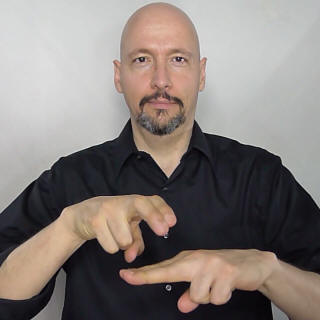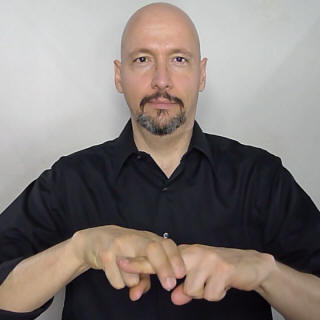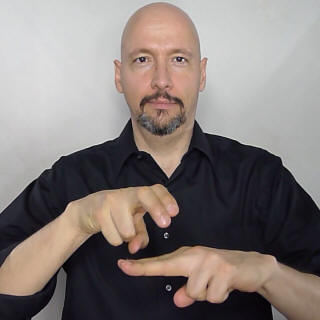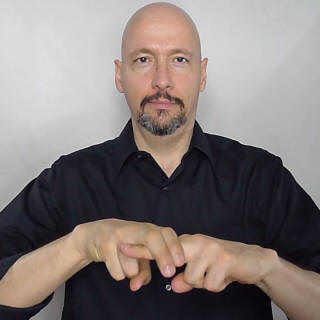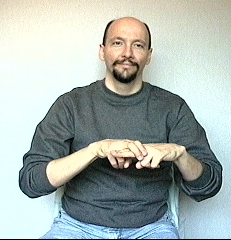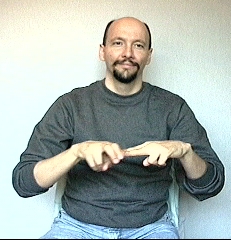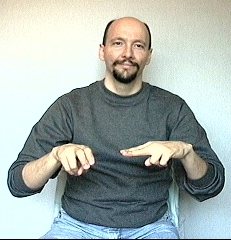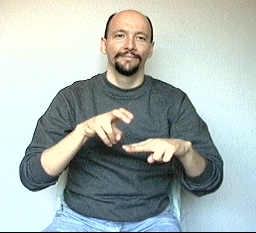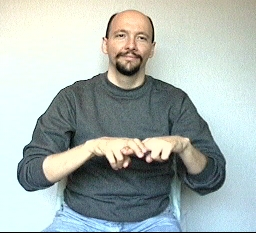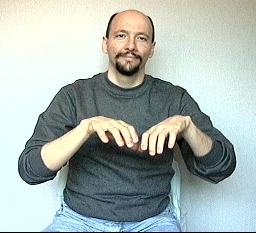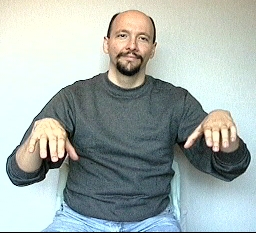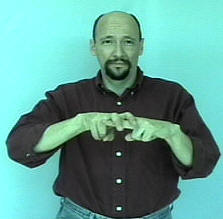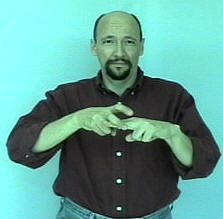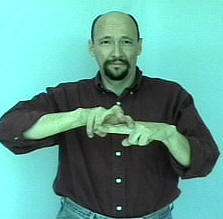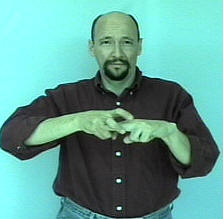The sign for "CHAIR/sit" is a classic "noun/verb" pair.
The noun, CHAIR, has a smaller, double movement.
The verb, SIT, has a larger, single movement.
CHAIR: [noun--double movement] (Do the sign "sit" twice.)
SIT:
This sign is the "verb" form of the sign "CHAIR." You just do the first half of the sign "CHAIR." One quick motion.
Note: See the "SIT" page for advanced forms of this sign.
BENCH: One movement. Modified form of "CHAIR."
This sign could also be used to indicate a row of people sitting.
COUCH:
This is a combination of "SIT" and "C" classifier handshapes to show the shape of a couch.
ANXIOUS:
The sign "SIT" can be modified to show someone squirming in their chair. This can be used to mean "anxiety" and similar concepts.
Notes:
A student asked me, "How do you sign 'long time.'"
My response involved the sign "sit" so I'm including it here:
In general I just do the signs "LONG" and then "TIME." But if you are signing something like, "I sat for a long time" you would modify the verb SIT with a "temporal inflection." What I mean by that is...you would do the sign for "SIT"...then you would move both hands up an inch, forward, down, and back (keeping your hands together--or shall we say, "keeping your buns on the chair") using a circular motion. This movement means that you have been "sitting for a long time"--so in that case you would not need a separate sign for "long time." The concept of "long time" would be shown by the way you move the sign.
You can learn
sign language (ASL) online at American Sign Language University ™
Lifeprint.com © Dr. William Vicars
